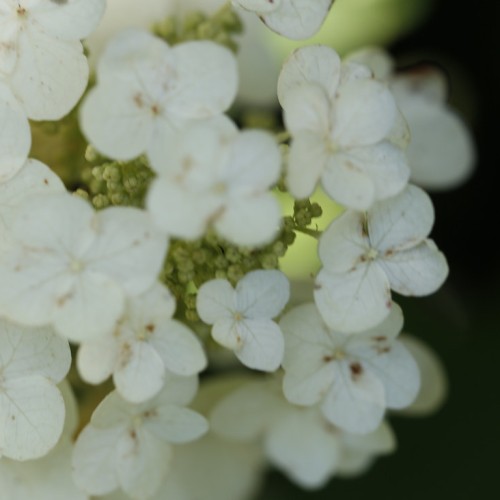
oakleaf hydrangea
Hydrangea quercifolia 'Queen of Hearts'
Cycle:
Perennial
Watering:
Average
Hardiness Zone:
5 - 9
Flowers:
Flowers
Sun:
Full sun,part shade
Leaf:
Yes
Growth Rate:
Low
Maintenance:
Low
Drought Tolerant:
Yes
Care Level:
Medium
watering
Oakleaf Hydrangea is known for its low-maintenance nature, so it is typically not difficult to keep them healthy and thriving. When it comes to watering, they prefer moist soil, but not water-logged. It is best to water them slowly and deeply once a week, allowing the soil to completely dry out in between, particularly when grown in warm temperatures and sunnier conditions. For cooler, shadier conditions, less frequent watering is often the best choice. During hot, dry weather, however, additional water may be needed to prevent wilting or leaf burn. As a general rule, it is best to aim to provide about 1 inch of water per week, either from rainfall or manual watering. It is important to remember that too much water is just as, if not more, damaging than not enough water. To optimize the health of your Oakleaf Hydrangea, use a moisture meter to check the soil moisture, and water as needed.
sunlight
Oakleaf Hydrangeas prefer partial to full sun (4 to 8 hours of direct sun per day), but they may scorch in full hot sun in the hottest areas. They need some shade in the midday, especially in warmer climates. Planting them in a location that gets morning sun and late day shade, or some protection from afternoon sun is ideal.
pruning
Oakleaf hydrangeas require minimal pruning. Light pruning can be done during the spring dormant season, after the last frost and prior to bud break. That said, pruning is not necessary if the plant is healthy and not outgrowing its space. If needed, pruning can include lightly cutting back stems that appear overgrown, or removing dead/diseased stems. You may also want to selectively prune stems to remove any dead flower heads. You should avoid any heavy pruning of healthy branches if possible, as this could encourage excessive new growth and reduce flowering.
